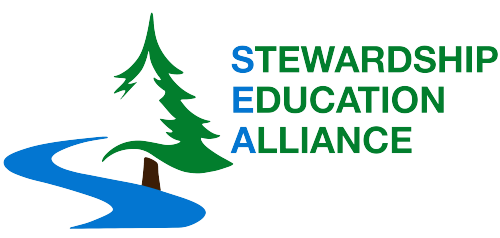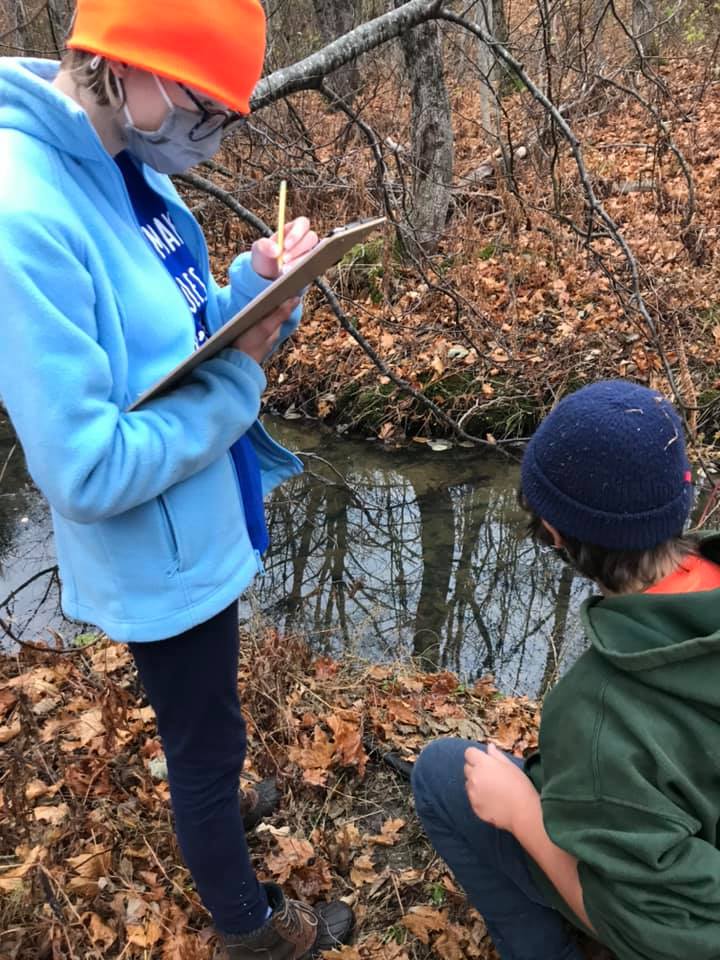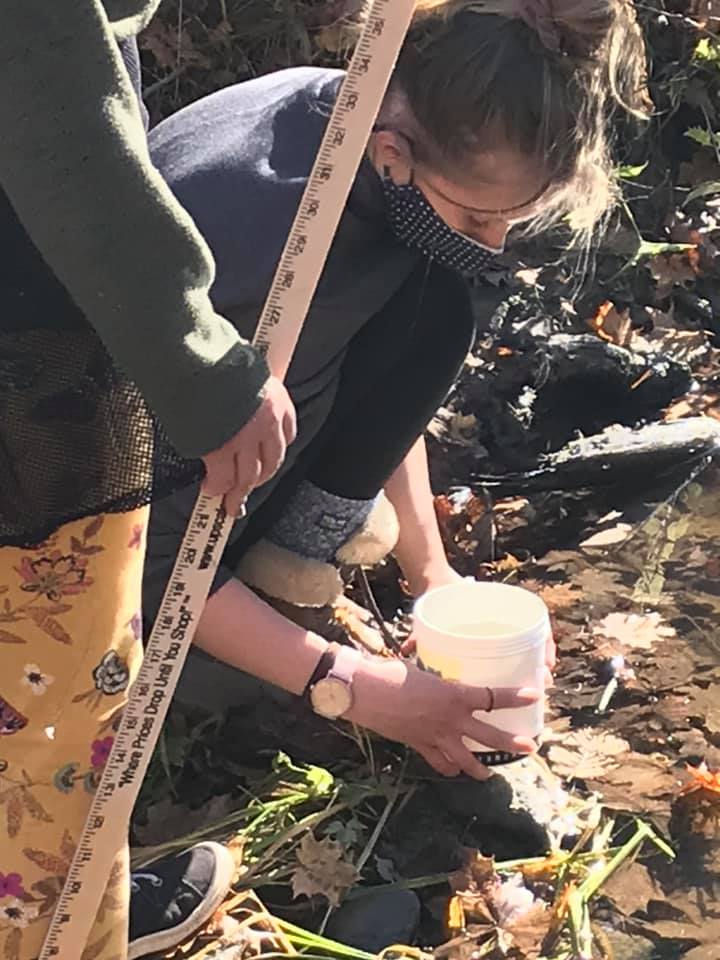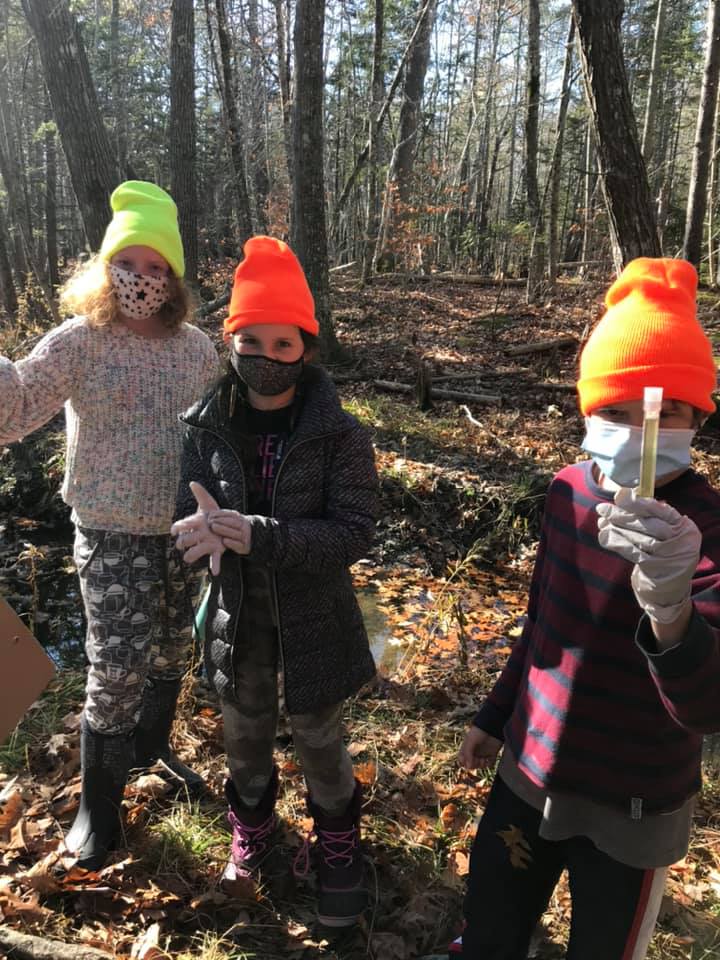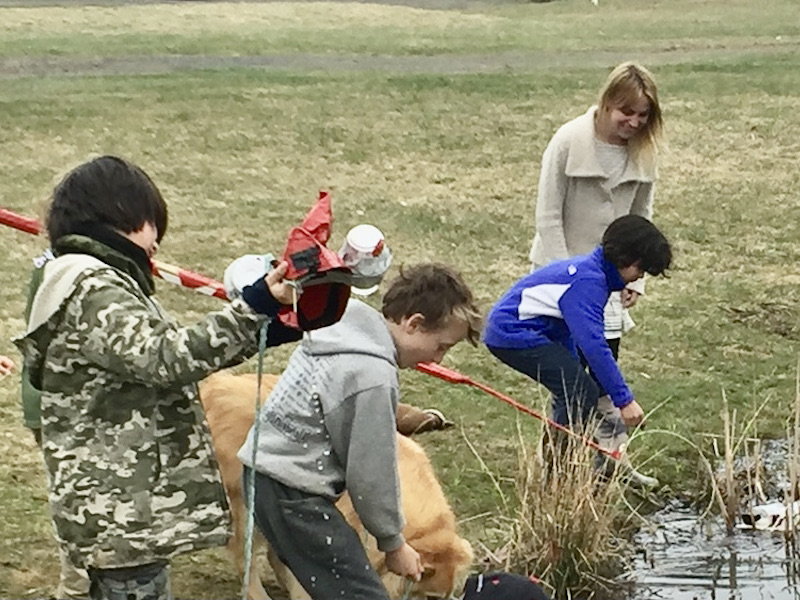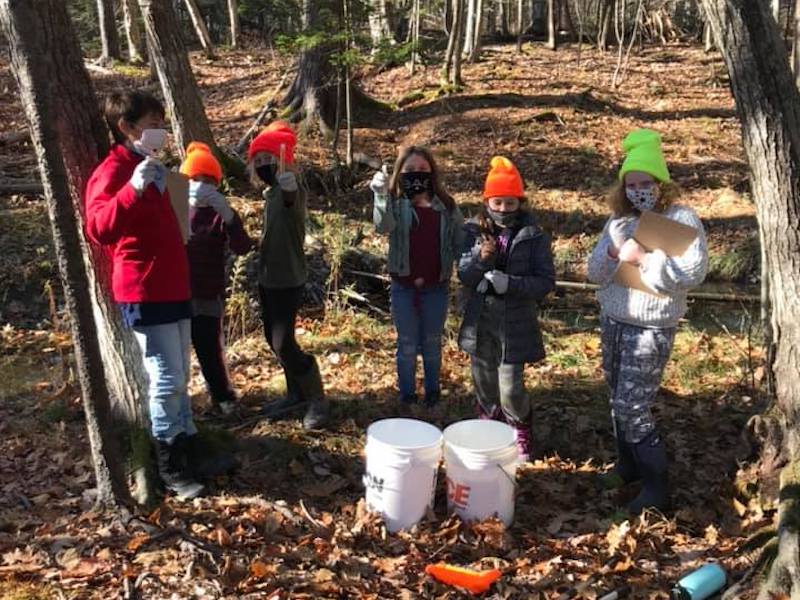In 2020 S.E.A. gave a grant to The Riley School, which they used to learn about water. The Riley School is fortunate to have an extensive campus that includes a stream as well as frontage on an ocean cove. This “Profile of the Child as Learner” written about one of the students was sent to S.E.A by school director Rebecca Clapp.
I thought you might enjoy seeing how the water study emerged at Riley with the materials you helped us to purchase! This is an excerpt from a child’s end of semester “evaluation” which at Riley, we call a “ Profile of a Child as a Learner”:
Our next major inquiry examined the question “How do we know if a body of water is healthy?” This inquiry stemmed from watching our pond (which was empty when the children returned to campus) refill with each rainstorm. Johnny’s class conducted an investigation of the pond; measuring and collecting data on chemical, physical, and biological factors. They discovered that the pond is fed by water runoff from the surrounding land and from the library building’s gutters. Using a water monitoring kit, Johnny tested chemical and physical indicators such as turbidity, temperature, pH, and dissolved oxygen. He recorded the data collected neatly and accurately. He analyzed his and his classmates’ data findings and compared them to published standards for water quality. Johnny’s Riley School Pond Study Report was neatly done with detailed diagrams that were accurately labeled. He concluded that “the pond’s turbidity level is of concern and the pond is not very healthy because there was a drought. Less frogs and less plants.” He will continue to improve and acquire more scientific process skills this next term.
We continued the water theme when we went to remote learning. During this week, the children focused on their water footprint and water conservation at home. Upon returning to campus, this investigation led to a study of the properties of water. Johnny explored the three properties of water (solid, liquid, and gas) and how they change when cooled or heated. He also conducted an experiment to learn about adhesion/cohesion and surface tension of water. As a class, we went step by step using the scientific method to conduct the experiment dropping water on a penny and together as a class we summarized and analyzed the results. Through this experiment, Johnny practiced his skills to predict, observe, test, record, and discuss results. Johnny accurately recorded observations and measurements and interpreted observations in a skillful way. Johnny is beginning to independently utilize scientific skills, demonstrate an understanding of target science content, and make relevant connections.
